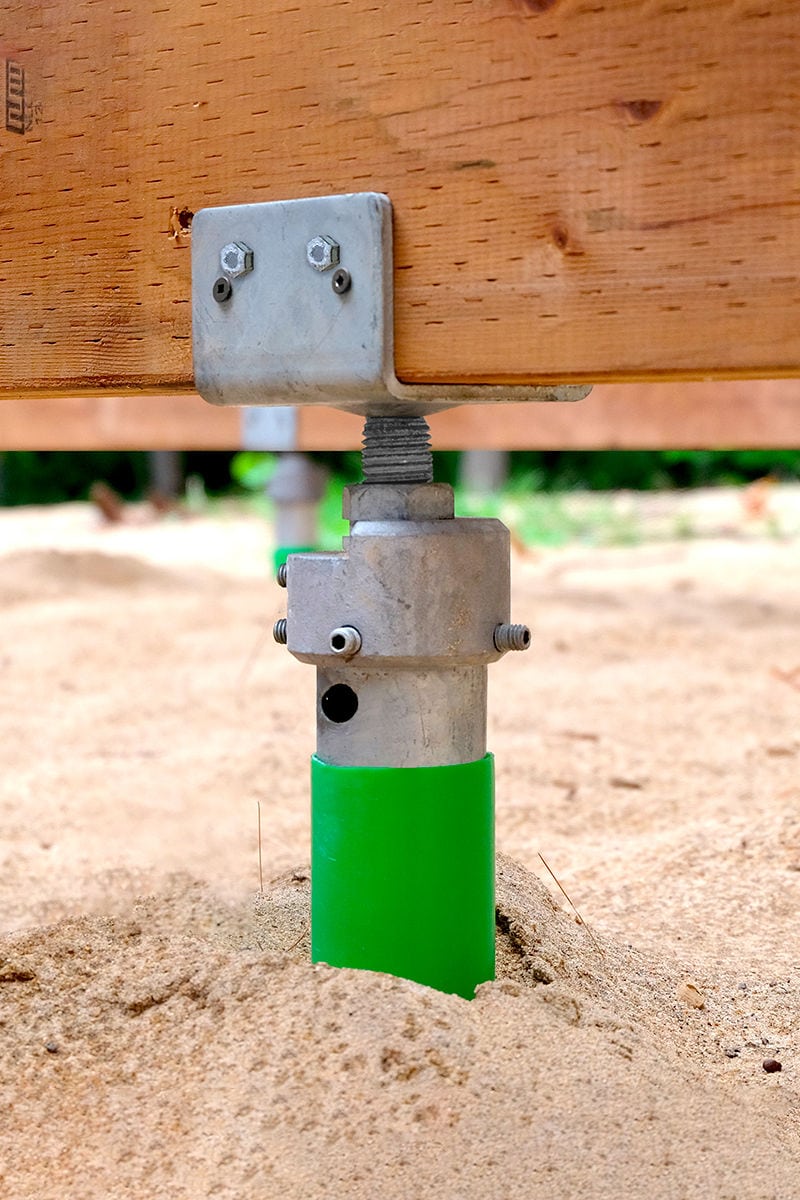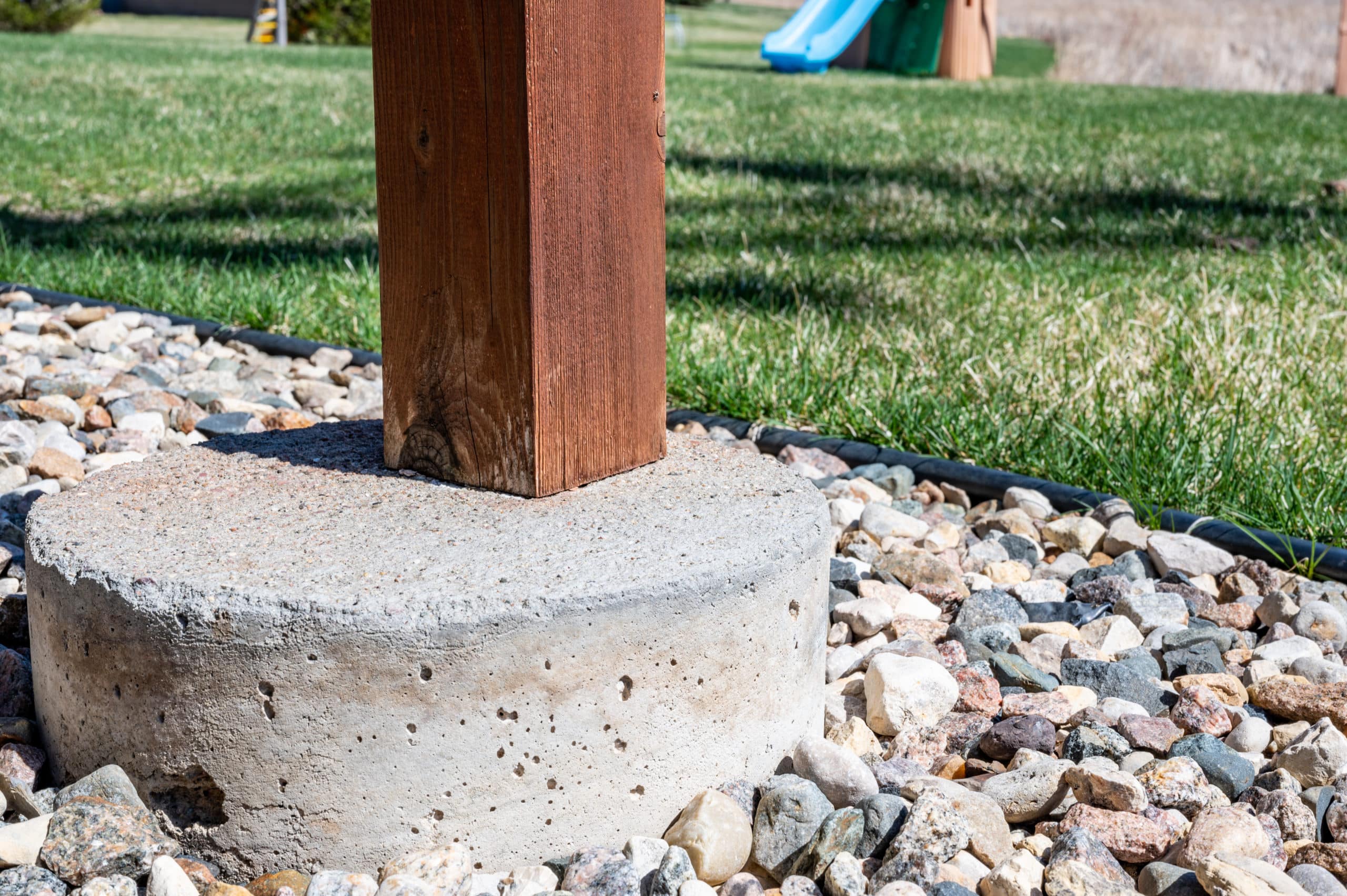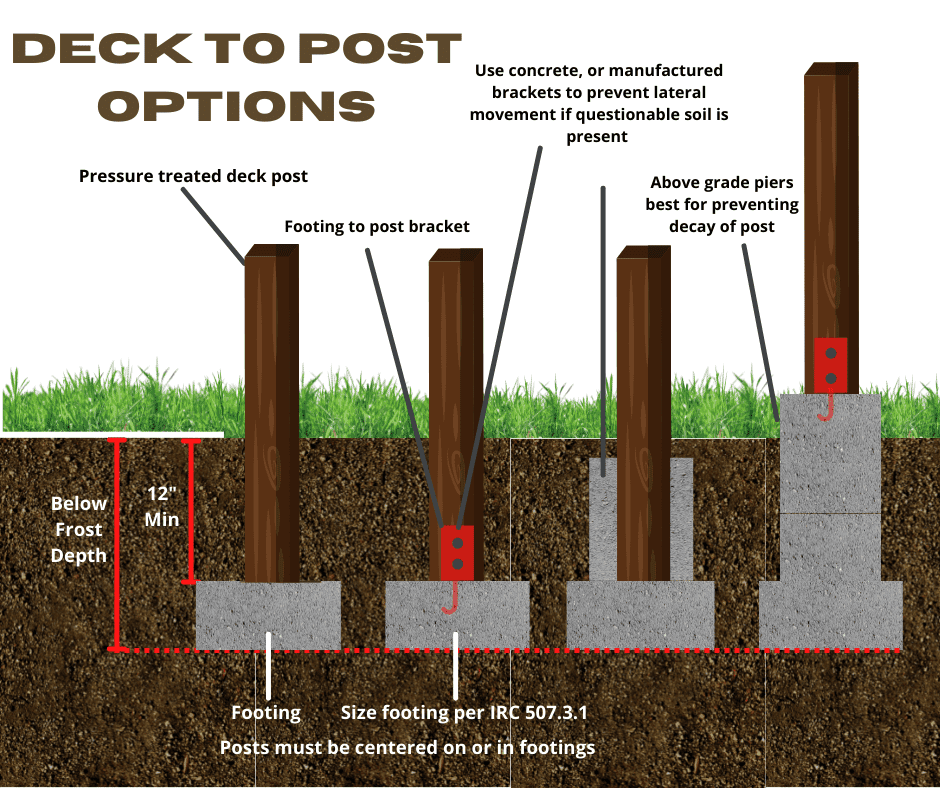Ensure Security and Durability With Appropriately Set Up Deck Footings
Deck footings might not be the most glamorous aspect of deck building, yet they play a vital duty in making certain security and longevity. Properly set up grounds supply a strong structure for your deck, preventing usual concerns like sagging, shifting, and also collapse. Selecting the best type of ground and properly mounting it can be a complicated process. In this conversation, we will check out the importance of proper deck footings, elements to take into consideration throughout installation, different types of grounds readily available, detailed installation overview, and upkeep ideas for guaranteeing lasting grounds. So, if you intend to make sure the security and longevity of your deck, maintain reading to discover the vital insights to accomplish a structurally sound and durable outdoor area.

Relevance of Appropriate Deck Footings
Why are properly set up deck footings critical for the stability and longevity of your deck? Deck footings are the foundation on which the deck relaxes, transferring the load from the deck to the ground.
To start with, effectively mounted deck footings distribute the weight of the deck equally, avoiding any type of unequal settling or sinking. This is especially important in locations with unsteady soil, as it helps to minimize the threat of the deck moving or breaking down. In addition, well-installed grounds guarantee that the deck continues to be degree, preventing any kind of structural damage that can occur when a deck becomes unequal.
Secondly, correctly set up footings supply a strong support for the deck, preventing too much movement and sway. This assists to keep the architectural stability of the deck, minimizing the risk of injuries or crashes. It additionally lessens the wear and tear on the deck, permitting it to stand up to the components and routine use for a longer amount of time.
Elements to Consider for Deck Ground Setup
When installing deck grounds, there are numerous essential factors to consider for appropriate installation. Different soil kinds have different load-bearing capabilities, so it is essential to carry out a dirt examination to make certain the footings can support the weight of the deck and its owners. By taking right into account these elements, you can make sure the correct setup of deck grounds and appreciate a resilient and secure deck.
Kinds Of Deck Grounds to Pick From
There are numerous various kinds of deck grounds available for you to pick from. Each type has its own advantages and disadvantages, so it's necessary to consider your specific needs and the problems of your deck prior to choosing.
One typical kind of deck footing is the concrete ground. This includes digging openings in the ground and putting concrete right into them to produce a solid foundation. Concrete footings are durable and offer superb security, making them suitable for decks in areas with difficult soil conditions or high wind tons.
One more choice is the helical pier footing, which consists of a steel shaft with helical plates that are screwed into the ground. These grounds are fast to set up and can be utilized in various dirt types, consisting of sandy or clay dirts. They are also adjustable, permitting easy leveling of the deck.
Sonotube footings are one more prominent choice. These footings are developed by positioning a cardboard tube in a hole and filling it with concrete. Sonotube footings are fairly easy to set up and provide adequate stability for smaller decks or in locations with much less demanding soil conditions.

When selecting the kind of deck footing, it's crucial to consider variables such as soil conditions, deck size and weight, why not try these out local building regulations, and personal preferences. By picking the suitable footing type, you can make sure the security and long life of your deck.
Step-by-Step Overview for Putting Up Deck Footings

Establish the place: Begin by noting the specific setting of each footing making use of risks and string (Deck Footings). Consider any kind of neighborhood building ordinance or regulations regarding trouble ranges
Dig the holes: Utilize an article opening digger or an auger to dig the openings for the footings. Normally, a depth of at least 36 inches is recommended for security.
Degree the openings: Make certain that the bases of the openings are level (Deck Footings). This can be achieved by making use of a degree or a straight board throughout the top of the holes
Add gravel: Place a layer of gravel at the base of each opening to improve drainage and prevent the ground from penetrating the dirt with time.
Put the ground forms: Insert the footing forms right into the holes, guaranteeing they are focused and degree. Use risks to protect them in position.
Mix and pour concrete: Comply with the directions on the concrete mix bag to prepare the concrete. Put the concrete right into the footing forms, filling them entirely.
Smooth the surface: Utilize a trowel to smooth the surface area of the concrete and eliminate any type of air pockets. Allow the concrete to heal according to the producer's instructions.
Upkeep Tips for Long-lasting Deck Grounds
Correct maintenance is crucial for guaranteeing the durability and stability of deck footings. By regularly checking and maintaining your deck footings, you can protect against damage and possible safety and security risks. One essential facet of maintenance is to on a regular basis check for any type of signs of damage, such as splits or motion in the grounds. If you see any problems, it is essential to address them without delay to stay clear of additional damages.
Regular cleaning is also vital for keeping deck footings. Plants, dirt, and debris can accumulate around the footings, which can result useful content in moisture build-up and decay. Cleaning up the footings frequently, using a pressure or a brush washing machine, can assist prevent these concerns and prolong the life-span of your deck.
In enhancement to cleaning, it is very important to keep the area around the grounds free from any type of obstructions. Avoid stacking things against the footings or permitting plants to expand as well near to them. These obstructions can trap dampness and create the Read More Here grounds to degrade with time.
Last but not least, normal resealing of the footings is advised to protect them from dampness and various other ecological aspects. Using a water-proof sealer can aid avoid water damages and prolong the life-span of the footings.
Final Thought
Finally, correct installation of deck footings is vital for guaranteeing security and durability of your deck. Variables such as soil type, load capability, and neighborhood structure codes need to be considered when choosing the appropriate sort of deck grounds. Complying with a detailed overview for installation and normal maintenance will certainly help to ensure the footings remain resilient and lasting.
In this conversation, we will certainly check out the value of proper deck grounds, factors to think about during installment, various types of footings available, detailed installation overview, and maintenance pointers for making certain durable grounds. Deck grounds are the structure on which the deck relaxes, moving the lots from the deck to the ground.One typical kind of deck ground is the concrete ground. Insert the footing kinds: Insert the footing develops into the openings, ensuring they are centered and level.In conclusion, proper setup of deck footings is vital for ensuring security and long life of your deck.